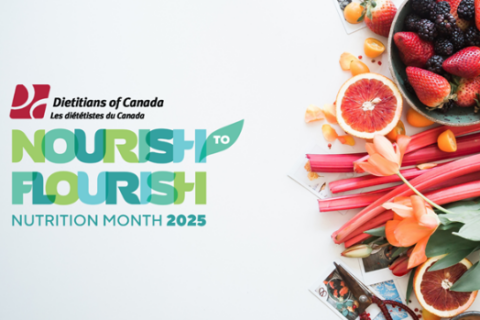How to Create a Food Neutral Home in 2023

How to Create a Food Neutral Home in 2023
Happy 2023! Let’s take a moment to pat ourselves on the back for making it through 2022…and the last 3 years for that matter. The worldwide COVID pandemic has taken a toll in many ways including (but not limited to) individual physical and mental health, the economy and supply chain, as well as the entire health care system. As a parent, it can be overwhelming to consider the impact that all of this may have on our children and their future. As a pediatric dietitian and mom of young children, it is heartbreaking to read that eating disorders in children and adolescents have not only doubled over 2000-2018, but continue to sky rocket over these last few years.
You may be wondering, what can I do? How can I foster a positive relationship with food in my child? One powerful way is to embrace food neutrality at home with yourself and your little ones! If you are willing to work to improve the food narrative in your home to that of neutrality, flexibility, and intuition, you will no doubt see positive transformations in both your and your children’s relationship with food.
What is food neutrality?
To be neutral with food is to embrace the philosophy that no one food is morally superior over the other. Unfortunately, we are fed persistent diet culture-based messages that stigmatize people based on their food choice. It is considered inferior or “bad” to choose the cookie, while those who choose the veggie platter are considered superior or “good”. The danger with this type of food narrative is that it causes a lot of undue stress and guilt when–god forbid–you decide to have a piece of chocolate cake. Imagine what this polarizing food talk could do to an impressionable, growing child? Kids think in very concrete terms. When they hear that chocolate is a “red-light food” or jelly-beans are “unhealthy”, they internalize these labels and think they are “bad” for eating or even wanting these foods.
Food neutrality is key in building the foundation for your child (and yourself) to feel the unconditional permission to eat. Strip away the dichotomous labels of “healthy” and “unhealthy” food and just call the food what it is: “an apple” or “an Oreo” … “a carrot” or “a cupcake”. It seems so simple, yet it takes self-reflection and intentional re-wiring of the deep-rooted beliefs we may hold about food.
But my kids need to know that some foods are healthier than others, right?!
When embracing food neutrality, we actually don’t teach kids about “healthy” and “unhealthy” food. These labels are not useful, and actually can cause harm. Now of course we all know that kale is not nutritionally equivalent to cotton candy. Food neutrality is not about casting aside the importance of nutrients in our food. It is simply a way to embrace all food for what it is and what value it brings to our life. For example, that package of Dunkaroos may bring feelings or warmth and nostalgia, while that yummy bowl of homemade chicken noodle soup brings healing to your body and soul. Being neutral with food gives us the opportunity to embrace all value that comes from food without judgement. It is amazing how much we become attuned to our body’s internal signals when we decide to part ways with judgmental food labels.
Instead of feeling stress or guilt for eating “too much”, instead we have space to reflect on how our body is feeling. Next time our choice might be to eat differently so that our body feels better. This type of self-awareness is what we want to cultivate in our children. Not judgement, shame and harmful labeling.
How should I talk about food?
A great place to start is to describe what you see and taste. Being descriptive with food engages your child in learning about the food that is served, without moral judgement or stigmatizing labels.
Here are a few examples:
A. “Today we have steamed carrots with butter. Carrots become softer when they are cooked and have a bit of a sweet taste. The orange color helps our eyes to see better!”.
B. “The chocolate cupcakes have colorful creamy frosting. They give our body really quick energy, which doesn’t last a very long time. They are yummy and fun to choose which color to eat!”
C. “Oatmeal tastes creamy and sweet when we mix in peanut butter and banana. It gives our body long-lasting energy to play and our brain lots of power to learn in school. Sometimes we cook oatmeal on the stove, but its also fun to bake it into oatmeal muffins so we can have it for a snack later!”
How do I manage out-of-home food labeling and food shaming?
Hold your ground, but in a polite way. It does no good to start a fight with auntie Karen, or Grandma at the dinner table. On the other hand, it is important to make others aware that food neutrality is important to you and your family. You will become very aware of the comments and actions of people in your life that do not embrace food neutrality or just don’t understand it. Food pressure, picky eating labels, inadvertent food and body shaming comments directed at your child can be extremely frustrating for you and confusing for your child. Boundaries around these types of comments need to be set. Here are a few examples of how to do so:
A. Aunt Karen: “Jessica, if you don’t finish your broccoli, you won’t get any dessert!”
You: “Oh actually we let Jessica listen to her body and let her decide how much she eats. She will get offered dessert like the rest of us, no matter how much dinner she eats.”
B. Grandma: “Stop being so picky and eat up the chicken pot pie grandma made you…you need to put some meet on those bones!”
You: “Nolan isn’t picky he’s just learning about different foods. We don’t put pressure on him to try a food if he’s not ready. Nolan- what grandma meant to say is you are perfect the way you are! Grandma loves you no matter what, right grandma?!”
C. “Oh my, your allowing him to have another cupcake? All of that sugar is so unhealthy for a growing boy.”
“Thanks for your concern but actually we don’t label foods as healthy, or unhealthy. It’s all just food. We trust that he knows his body best and let him decide how much to eat of any offered food.” For more scenarios of how to address these types of comments read this detailed blog on food neutrality!
It won’t happen overnight
We tend to go into New Years resolutions with high expectations of success and perfection. But, in reality we are all human and therefore are beautifully imperfect. Don’t beat yourself up about it. The diet culture of rigid food rules and beliefs are deeply rooted in our society, it is unrealistic to expect this
to shift overnight. Take small, attainable steps toward embracing food neutrality in your home. Here are some ideas of where to start:
Ø Write it down. You don’t have to write a novel to reflect! At the end of the day think about one or two situations where you could have shifted your language or thought process to be more neutral around food.
o Ex: Negative food/body talk- “Ugh, mommy’s going to have to work off all this pie I just ate!”
Reframe- “This apple pie is delicious! I really enjoy it when its warm out of the oven.”
Ø Aim to call food by its name rather than morally charged food labels. Avoid calling desert or processed foods “red light foods”, “unhealthy” or “junk food”. In the same vein avoid calling whole, unprocessed foods “healthy”, “clean” or “green light foods”.
o Ex: Labeling food- “Eating cookies before supper is unhealthy! You’ll ruin your appetite for supper.”
Instead try- “The kitchen is closed right now, but supper is soon. We can put cookies on the menu tonight it you’d like?”
Ø Give your child (and yourself!) judgement-free permission to eat what, and how much they want of the food offered at meals. Your role is simply deciding when and what food is offered. Giving your child this independence nurtures a positive relationship with food and their body. As a result they will develop confidence in their ability to interpret hunger and fullness signals, and learn how different foods feel in their body.
With continuous small steps like these, external labels and judgement will not be the driving force of your child’s (or your) choices around food. What a beautiful thing!
References: Prevalence of eating disorders over the 2000–2018 period: a systematic literature review | The American Journal of Clinical Nutrition | Oxford Academic (oup.com) Why Eating Disorders Surged Through COVID-19 | Psychology Today COVID-19 and eating disorders in young people – The Lancet Child & Adolescent Health


